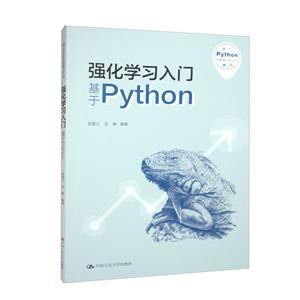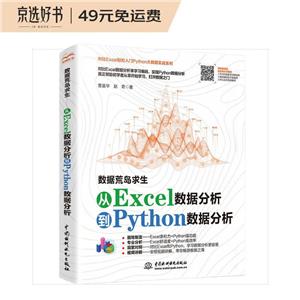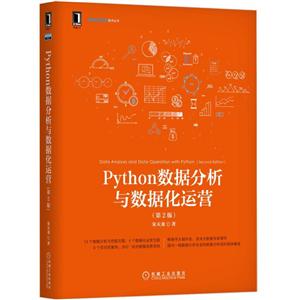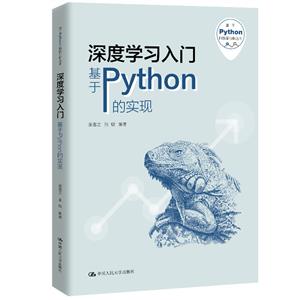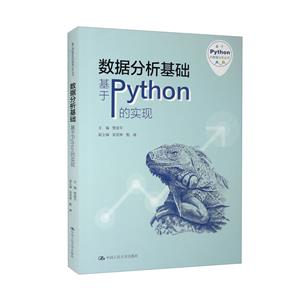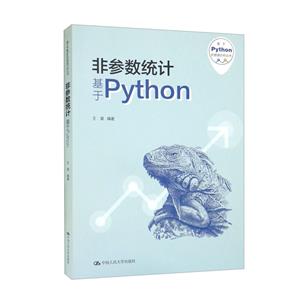
作者:赵煜辉主编
页数:268页
出版社:西安电子科技大学出版社
出版日期:2020
ISBN:9787560655772
电子书格式:pdf/epub/txt
内容简介
本书介绍了矩阵计算的基本方法, 并从特征值分解和奇异值分解出发, 给出一个超定矩阵的最小二乘法问题的模型建立、证明和一般求解方法, 并引出欠秩的多元线性方程组的求解方法问题, 然后介绍了两种有损的降维方法。
目录
1.1 Fundamental Concepts
1.1.1 Notation
1.1.2 “Bigger睟lock” Interpretations of Matrix Multiplication
1.1.3 Fundamental Linear Algebra
1.1.4 Four Fundamental Subspaces of a Matrix
1.1.5 Vector Norms
1.1.6 Determinants
1.1.7 Properties of Determinants
1.2 The Most Basic Matrix Decomposition
1.2.1 Gaussian Elimination
1.2.2 The LU Decomposition
1.2.3 The LDM Factorization
1.2.4 The LDL Decomposition for Symmetric Matrices
1.2.5 Cholesky Decomposition
1.2.6 Applications and Examples of the Cholesky Decomposition
1.2.7 Eigendecomposition
1.2.8 Matrix Norms
1.2.9 Covariance Matrices
1.3 Singular Value Decomposition (SVD)
1.3.1 Orthogonalization
1.3.2 Existence Proof of the SVD
1.3.3 Partitioning the SVD
1.3.4 Properties and Interpretations of the SVD
1.3.5 Relationship between SVD and ED
1.3.6 Ellipsoidal Interpretation of the SVD
1.3.7 An Interesting Theorem
1.4 The Quadratic Form
1.4.1 Quadratic Form Theory
1.4.2 The Gaussian Multi睼ariate Probability Density Function
1.4.3 The Rayleigh Quotient
Chapter 2 The Solution of Least Squares Problems
2.1 Linear Least Squares Estimation
2.1.1 Example: Autoregressive Modelling
2.1.2 The Least睸quares Solution
2.1.3 Interpretation of the Normal Equations
2.1.4 Properties of the LS Estimate
2.1.5 Linear Least睸quares Estimation and the Cramer Rao Lower Bound
2.2 A Generalized “Pseudo睮nverse” Approach to Solving the Least瞫quares Problem
2.2.1 Least Squares Solution Using the SVD
2.2.2 Interpretation of the Pseudo睮nverse
Chapter 3 Principal Component Analysis
3.1 Introductory Example
3.2 Theory
3.2.1 Taking Linear Combinations
3.2.2 Explained Variation
3.2.3 PCA as a Model
3.2.4 Taking More Components
3.3 History of PCA
3.4 Practical Aspects
3.4.1 Preprocessing
3.4.2 Choosing the Number of Components
3.4.3 When Using PCA for Other Purposes
3.4.4 Detecting Outliers
References
3.5 Sklearn PCA
3.5.1 Source Code
3.5.2 Examples
3.6 Principal Component Regression
3.6.1 Source Code
3.6.2 K睩old Cross睼alidation
3.6.3 Examples
3.7 Subspace Methods for Dynamic Model Estimation in PAT Applications
3.7.1 Introduction
3.7.2 Theory
3.7.3 State Space Models in Chemometrics
3.7.4 Milk Coagulation Monitoring
3.7.5 State Space Based Monitoring
3.7.6 Results
3.7.7 Concluding remarks
3.7.8 Appendix
References
Chapter 4 Partial Least Squares Analysis
4.1 Basic Concept
4.1.1 Partial Least Squares
4.1.2 Form of Partial Least Squares
4.1.3 PLS Regression
4.1.4 Statistic
Reference
4.2 NIPALS and SIMPLS Algorithm
4.2.1 NIPALS
4.2.2 SIMPLS
References
4.3 Programming Method of Standard Partial Least Squares
4.3.1 Cross瞯alidation
4.3.2 Procedure of NIPALS
4.4 Example Application
4.4.1 Demo of PLS
4.4.2 Corn Dataset
4.4.3 Wheat Dataset
4.4.4 Pharmaceutical Tablet Dataset
4.5 Stack Partial Least Squares
4.5.1 Introduction
4.5.2 Theory of Stack Partial Least Squares
4.5.3 Demo of SPLS
4.5.4 Experiments
References
Chapter 5 Regularization
5.1 Regularization
5.1.1 Classification
5.1.2 Tikhonov Regularization
5.1.3 Regularizers for Sparsity
5.1.4 Other Uses of Regularization in Statistics and Machine Learning
5.2 Ridge Regression: Biased Estimation for Nonorthogonal Problems
5.2.1 Properties of Best Linear Unbiased Estimation
5.2.2 Ridge Regression
5.2.3 The Ridge Trace
5.2.4 Mean Square Error Properties of Ridge Regression
5.2.5 A General Form of Ridge Regression
5.2.6 Relation to Other Work in Regression
5.2.7 Selecting a Better Estimate of ?
References
5.3 Lasso
5.3.1 Introduction
5.3.2 Theory of the Lasso
References
5.4 The Example of Ridge Regression and Lasso Regression
5.4.1 Example
5.4.2 Practical Example
5.5 Sparse PCA
5.5.1 Introduction
5.5.2 Motivation and Method Details
5.5.3 SPCA for p ≥ n and Gene Expression Arrays
5.5.4 Demo of SPCA
References
Chapter 6 Transfer Method
6.1 Calibration Transfer of Spectral Models[1]
6.1.1 Introduction
6.1.2 Calibration Transfer Setting
6.1.3 Related Work
6.1.4 New or Adapted Methods
6.1.5 Standard瞗ree Alternatives to Methods Requiring Transfer StandardsReferences
6.2 PLS Subspace Based Calibration Transfer for NIR Quantitative Analysis
6.2.1 Calibration Transfer Method
6.2.2 Experimental
6.2.3 Results and Discussion
6.2.4 Conclusion
References
6.3 Calibration Transfer Based on Affine Invariance for NIR without Standard Samples
6.3.1 Theory
6.3.2 Experimental
6.3.3 Results and Discussion
6.3.4 Conclusions

